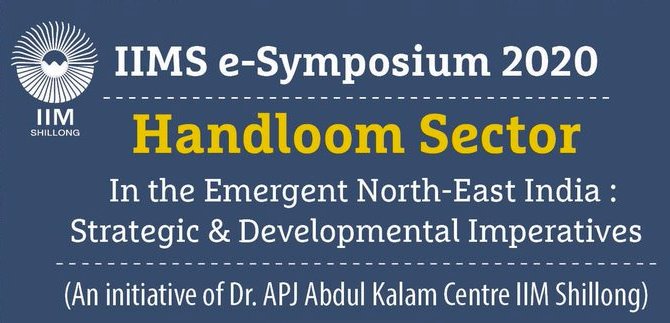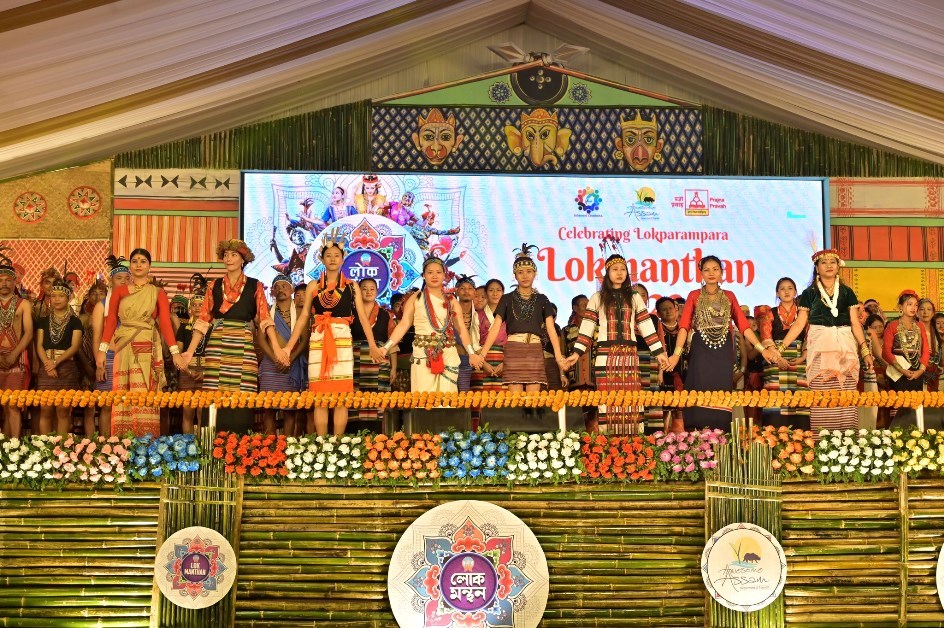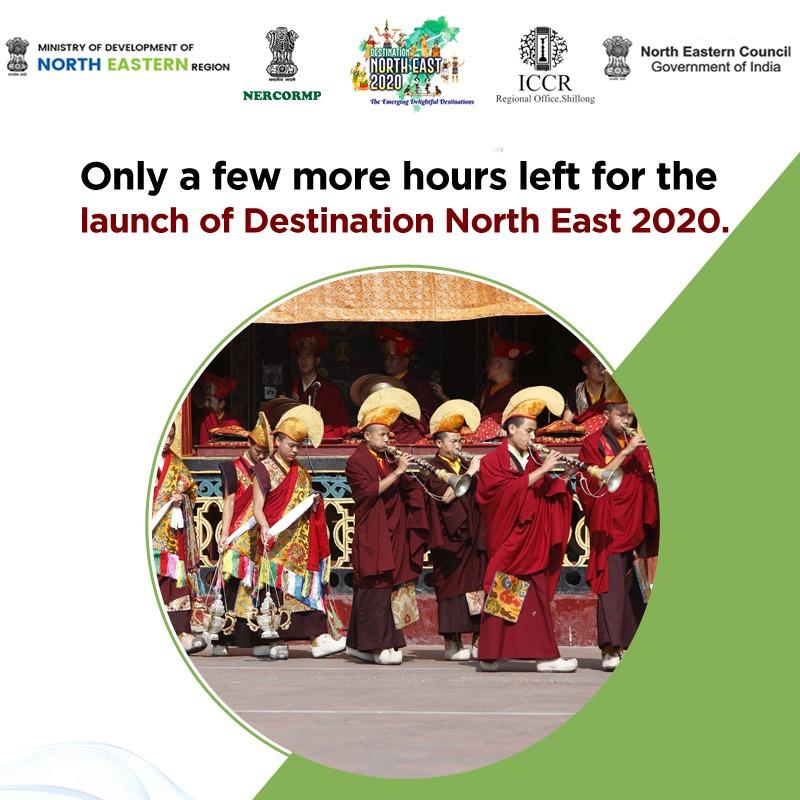For far too long, I think the handloom legacy of our country has been romanticised with the element of poverty, and I think from the marketing perspective we need to reposition ourselves and look at the larger consumption market: Smriti Zubin Irani
 KRC TIMES Desk
KRC TIMES Desk

The Dr. APJ Abdul Kalam Centre for Policy Research & Analysis under the aegis of IIM Shillong hosted an e-symposium on Handloom Sector under the e-Symposia Series on Emergent North East India: Strategic and Developmental Imperatives.

Chairman of the Board of Governors, IIM Shillong Shishir Bajoria while welcoming the participants said “The series of e-symposia has been conceived, covering areas of special importance to the entire northeast. The beautiful products weaved out of the handlooms here leave a very clear sign of the beauty of the region.”
He further said, “Since the pandemic has impacted the world economy has taken a backseat. Lots of workers from the northeast who were earning their livelihoods from the different parts of the country have returned home. In this situation the handloom sector can be primed up to boost the economy of the entire region and generate employment. What it needs is the requisite intervention in terms of finance, appropriate technological introduction, creation of brand identities, forward and backward integrations, and above all logistics support.”

“For far too long, I think the handloom legacy of our country has been romanticised with the element of poverty, and I think from the marketing perspective we need to reposition ourselves and look at the larger consumption market’
Union Minister of Textiles and Women & Child Development Smriti Zubin Irani who was the Chief Guest of the symposium, further opined, today when sustainability has become the buzzword not only for manufacturers, buying agents, and international chains that can leverage the handloom opportunity, there has to be a more systemic approach on how to make handlooms a better business opportunity given the semblance of pride in the handloom legacy of our country, particularly the northeast, while also trying to understand the issues that ail this particular sector that we are today talking about.”
Some of the points brought forward by her for consideration was the necessity to encourage weavers to actually have a business plan and a pathway to success, which means looking at input costs, access to better credit, access to better design opportunities, understanding of IPR and packaging, which also entails how positioning and branding of raw material can differ from one segment to the other. She further added, “Instead of looking at a minute segment which we see to service, we need to look at a product range for a larger consumer base,” while emphasising on not looking only at exports but also servicing India which is one of the largest global consuming markets of the world.
Director of IIM Shillong, Prof D P Goyal while expressing his thoughts said, “Sincere thanks go to the nameless weavers of NE India who have not only been the ambassadors of the culture and heritage of the region but also its true custodian, who for hundreds of years have carried the knowledge of handloom by practicing and passing it on to the next generation.”
In the technical session on The Handloom Sector: Energizing the potential catalyst for growth and development, Prof Keya Sengupta, Centre Coordinator, said, “We hope that the policies that shall be drafted for the handloom sector will help us to achieve the policy goal of Look East & Act East envisioned by our Prime Minister, and make the sector commercially viable.” She further pointed out, “Handloom, as we are all aware, is engrained as part of all the rural population of the region and is a traditional rural industry, but has not been viewed commercially so far, though it has the full potential and capabilities of developing its own trademark due to its own indigenous ethnicity, though at the same time is being burdened with challenges such as high cost of raw material, lack of information on market availability, the existence of middlemen, inadequate innovation and stiff competition from textile products from the neighbouring states and countries.”
Member of the Board of Governors, Atul Kulkarni while moderating the session opined, “The handloom sector is one which is caught between subjective perception and objective reality. It is an activity which is in deep crises with low productivity, low wages, low literacy level, with firmly entrenched middlemen system and very little formal finance arrangements.”
Other speakers at the e-symposium included Dilip Barooah Founder & MD, Fabric Plus, Jahnabi Phookan National President, FICCI Ladies Organisation(FLO) and Director JTI Group, Renu Abraham, Founder RHHCSL (Renu Handlooms and Handicraft Co-operative Society Ltd.), Janessaline Mary Pyngrope, Business Head (Daniel Syiem’s Ethnic Fashion House), Asomee Dutta Baruah, Secretary, Sreemanta Sankar Mission of Guwahati & Head (NE Region) of the WEP, NITI Aayog, Anuradha Kuli, Founder Naturally Anuradha, and Prof. Monika Aggarwal, Director – National Institute of Fashion technology, Shillong.




